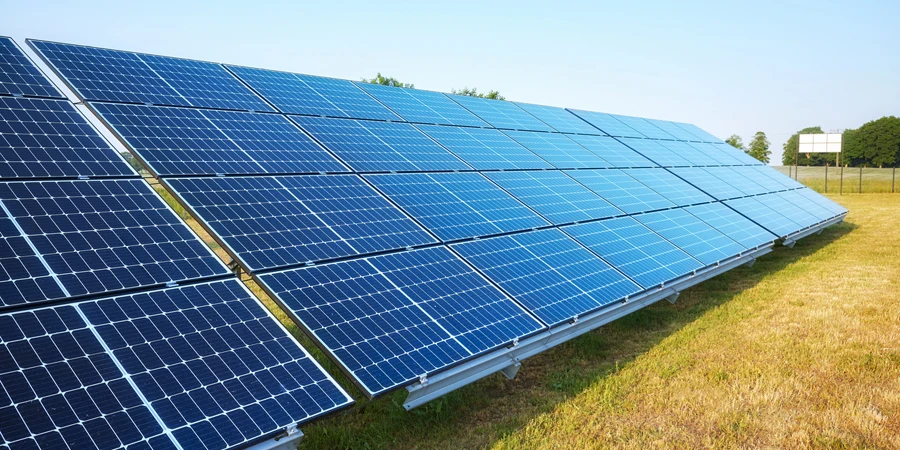- A SEMA Coalition report on the US local manufacturing industry points to the gaps that threaten its growth
- Oversupply of cheaper solar modules, especially from China, are threatening the local manufacturing initiatives
- Even with the IRA in play, the industry needs more support to establish upstream supply chain
- Aggressively enforcing the UFLPA is crucial to maintaining a level playing field for domestic producers
The Inflation Reduction Act (IRA) is not enough to establish a stable, secure and robust US solar PV manufacturing supply chain that continues to heavily rely on imports in the face of oversupply challenges.
The industry needs more ‘whole-of-government’ effort, according to a new report from Guidehouse Insights, commissioned by the Solar Energy Manufacturing for America (SEMA) Coalition.
CHALLENGES
“Following the passage of the IRA, with its provisions to level the playing field for US manufacturers, billions of dollars of intended investments were announced throughout the US solar supply chain. Now, as subsidized overseas – manufacturers in China and Southeast Asia use their outsize market control and questionable trade tactics to undermine those investments, the onshoring progress is stalled as US manufacturers await further support to achieve the promised supply chain independence,” reads the report.
Oversupply of modules into the US market is a serious concern, according to the analysts since this is bringing down module prices. This means the US manufacturers can’t compete with heavily subsidized companies from China that also produce at economies of scale.
The US government’s emergency moratorium on safeguard tariffs on solar products originating from China and entering the US shores via 4 Southeast Asian nations has also increased the supply of cheaper solar modules within America.
Till June 2024, when the moratorium is set to be lifted, the high import levels will likely come down, but not until some 91.6 GW is supplied to the market, far exceeding the 38.7 GW projected demand in 2024. If after June 2024 the moratorium is lifted and no tariffs are imposed, the report writers count as much as 102.4 GW of module supply into the US
Auxin Solar and Concept Clean Energy have challenged the moratorium, which ROTH MKM believes could lead to retroactive tariffs on $10 billion worth of solar modules already imported, unliquidated or even installed (see Solar Companies Challenge US Govt Tariff Moratorium).
Guidehouse argues that in the absence of a US policy response to the current influx of imports for both components and finished products, recent factory announcements will likely not come to fruition.
The IRA has brought in confidence and promise of financial incentives to the local PV industry leading to several announcements for new cell and module manufacturing units. The writers believe even if half of this announced capacity comes online, the country could produce enough to meet nearly 100% of its new solar demand through 2027.
Even though this is a promising start, analysts point to the gaps when it comes to the local manufacturing of upstream components. Analysts argue, “These manufacturing steps are the most capital intensive yet among the least incentivized through the provisions in the IRA.”
For instance, the US has enough polysilicon capacity to make about 20 GW of crystalline silicon products/year. However, it still needs critical next-step manufacturing facilities for refinement and component fabrication steps in solar cell manufacturing.
It also lacks manufacturing capacity for ingots, wafers and cells, thus ensuring dependence on global suppliers.
According to the research, this continued overreliance on foreign imports will leave the US industry vulnerable to price and supply volatility, along with any geopolitical issues, not to miss the threat it will pose to the achievement of US climate targets.
China, on the other hand, controls 97% of the global PV manufacturing facilities, over 99% of global wafering capacity, produces more than 90% of solar-grade polysilicon, and Chinese-owned companies control 80% to 95% of global shipments across the solar supply chain.
“Solar manufacturers in America are operating well below their full potential because the government is facilitating an over-reliance on China and failing to provide a level playing field to help fuel investment and innovation,” says SEMA Coalition Executive Director Mike Carr.
POLICY RECOMMENDATIONS
The writers offer the following main recommendations to help the US onshore its solar production to benefit with cleaner production, higher labor standards and create middle-class enabling jobs:
- Domestic Content: Policymakers should set strong standards for getting bonus tax credits for using domestic content and federal procurement in order to incentivize investment in the high-value, capital-intensive parts of the supply chain such as wafer and polysilicon production.
- Vigorous Enforcement of US Trade Laws: Strong enforcement of antidumping trade laws and aggressively enforcing the UFLPA are crucial to maintaining a level playing field for domestic producers who adhere to higher labor and environmental standards.
- Procurement: Beyond instituting policies for bonuses associated with domestic solar manufacturing, the US government could lead by example and require all solar power producers with which it has power purchase agreements to use solar panels with the highest standards for US-made components.
They caution that acting on these recommendations will push the market towards buying more expensive US modules. Yet, total system cost will increase ‘only mildly’ depending upon the application.
“Potential cost reductions in other areas of solar deployment (i.e., permitting, installation/overhead, and balance-of-system operations) are likely to have a larger impact on market growth,” they opine.
The complete report, titled Inflection Point: The State of US PV Solar Manufacturing & What’s Next, is available on SEMA Coalition’s website for free download.
Source from Taiyang News
Disclaimer: The information set forth above is provided by Taiyang News independently of Alibaba.com. Alibaba.com makes no representation and warranties as to the quality and reliability of the seller and products.




